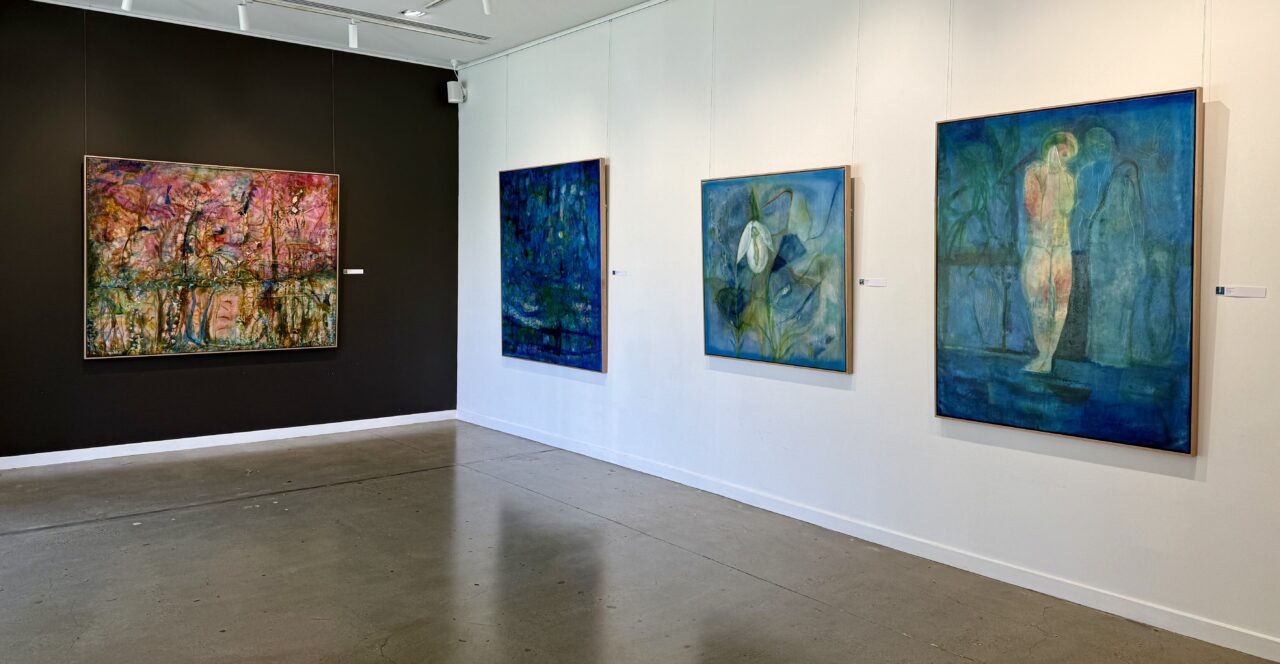Richard Dunlop has offered up a beautiful solo exhibition this October titled ‘SANCTUARY’ the paintings really take the viewer to another place. Read more below about this body of work and how Richard builds each layer to form a canvas full of depth and intention.
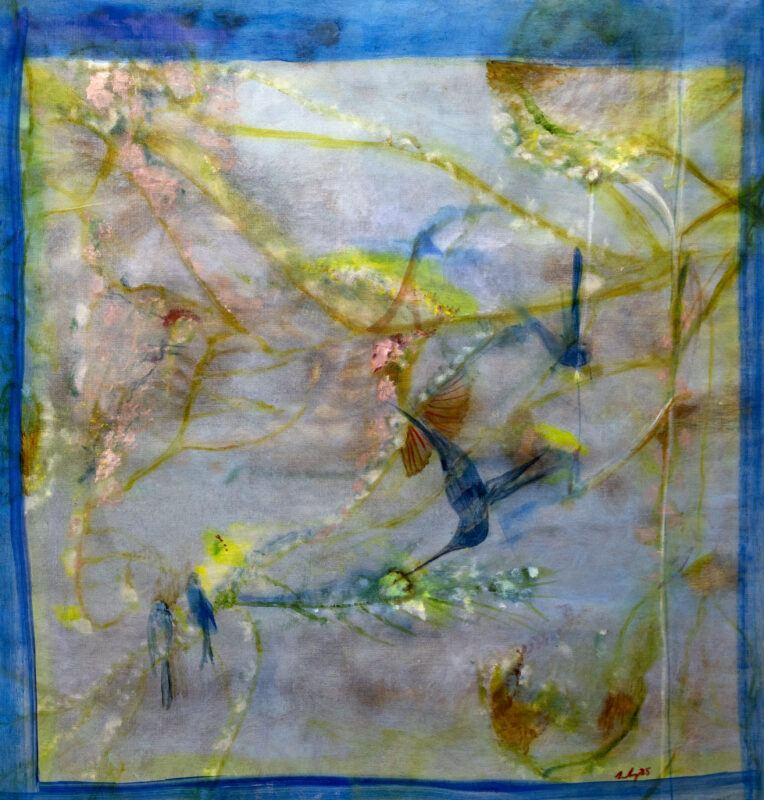
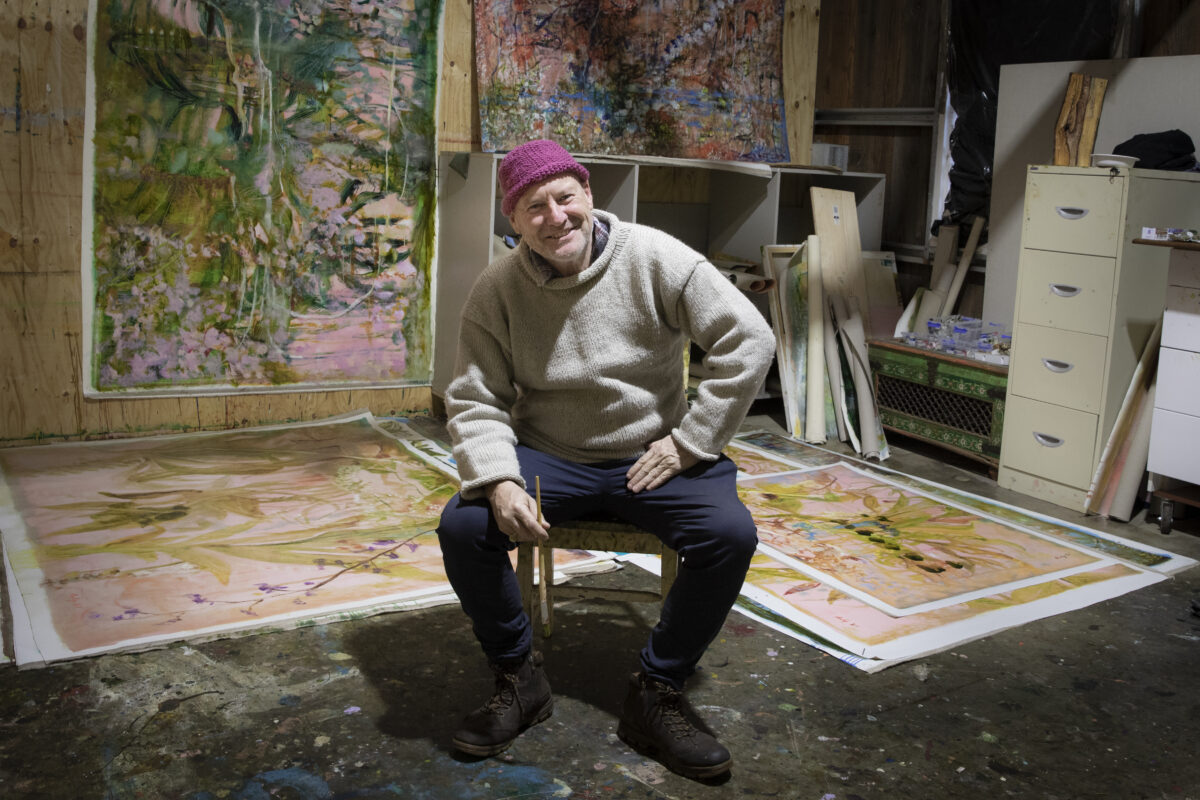
I remain in love with the achievements of the great colourist French painters – Degas, Monet, Matisse, and Bonnard right through to my contemporaries like Claire Tabouret. I admire their capacity to depict light luminously and make forms seem to move with the inert substance of oil paint… not to forget their adventurous attitude to saturated colour to express emotion as a key purpose of art. Their treatment of water, particular Matisse’s versatile use of stinging Mediterranean blues allowed for the illusion of ambiguous depths in the picture plane. The illusion was sometimes completed with goldfish. Their paintings have luxurious surfaces when seen in the flesh, something that only the most sophisticated handling of oil paint can offer as it settles into place over time. Their maturity as artists meant imposing their own vision onto the external world, learning from others (including Japanese and African artists) and the conjuring of these inner sensations was positive and optimistic in orientation, as I wish my own work to continue to be.
The great French artists preferred, as I do, to produce images that might be considered of enduring beauty and preserved, rather than be distracted by the temporal politics of the day, and be destined to be overtaken by the next news cycle. Monet painted his exceptional water gardens while soldiers marched to World War One outside his door, and continued to paint them after the war ended. If the sexist language of the day can be excused, Monet’s colleague Matisse tried to explain his timeless intentions, and his statements remain relevant:
“What I dream of is an art of balance, of purity and serenity, devoid of troubling or depressing subject matter, an art which could be for every mental worker, for the businessman as well as the man of letters, for example, a soothing, calming influence on the mind, something like a good armchair which provides relaxation from physical fatigue. The work of art must carry within itself its complete significance and impose that on the beholder even before he recognizes the subject matter.”
Art was understood to be a grand form of escapism, like great cinema has a capacity to transport our imaginations and convince us on its own terms. The great French colourists always rejected reasoning and pre-existing imagery and proceeded to create idiosyncratic, and unapologetically sumptuous paintings.
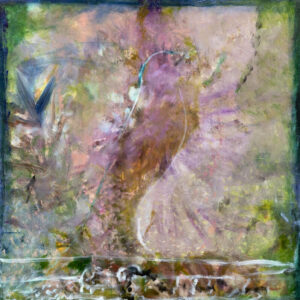
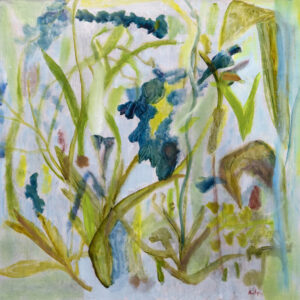
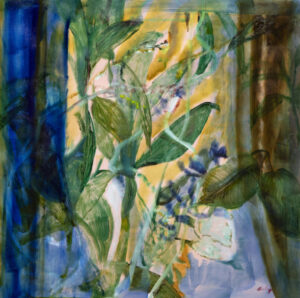
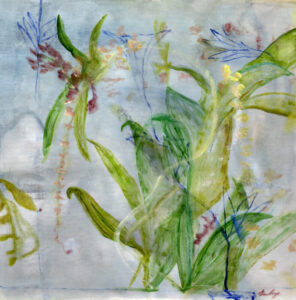
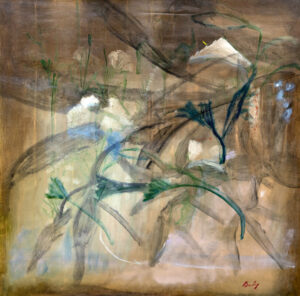
The titles of works in the Sanctuary exhibition provide some entry points to certain subjects, but beyond that the main considerations are aesthetic rather than literal. The title work, for example, is an image of fabric upon which birds pirouette among plants held in suspension or apparently floating. It is a work which signals luxurious inner space. I hope to have created a body of images which carry some mystery intact, observe formalist concerns in the history of painting itself, and otherwise believe that good pictures should not need the addition of great deals of explanation. Paintings should be able to stand on their own two feet, rather than be an appendage to literature. The images are ones of invention rather than the naturalistic depictions of birds or their plumage, or French interiors, so that the sensations and metaphorical qualities are condensed into novel arrangements of line, colour and form springing from memory and a concern to reconcile all aspects of the image into a unified whole. Matisse insisted that his aim was to “achieve unity by stressing the affinity between things, their “rapport”. When creating an exhibition, there is always one eye to art history and the history of images generally, and the rest akin to a musician crafting a set of songs for an album.
It may seem anachronistic to be interested in works from a century ago, but I have a firm belief in the cyclical and non-fixed nature of art and culture, rather than a continuous linear progression. Sanctuary represents an array of somewhat introspective themes and imagery which reference the art lineage of great colourists and which simultaneously extends upon the well-received explorations made in several previous exhibitions at Gallery One, Here Comes the Sun, Luxurious Inner Gardens, and Big Water Views. Sanctuary takes my work deliberately into several new experimental corridors, with the connection to earlier French artists seeming tenuous at times, and no more than a departure point for the creation of fresh images. The common denominator for all of the explorations involves neo-romantic landscapes and interiors which have a strong emphasis on depth in the picture plane as a result of unique colour and sometimes calligraphic brushstroke combinations. As my aim is to create memorable images, that necessarily involves a degree of risk-taking with a variable pay-off. Each part and new painting takes its impetus from another, so there is a conversational relationship between paintings within the exhibition, as well as with the painters in European and also non-European art history.
The exhibition involves many disparate thoughts. All of the paintings represent an attempt to effectively displace an external world of appearances to an internal world of the imagination, an aim of impressionists which deserves revisiting periodically. Signs and painterly traces perform a transformative function, effected by transpositions of colour and metaphor. Each work strives for a harmonious synthesis of colour, line and form, a light-bathed unified field of paint, and ornamented spaces are all hopefully evident in works such as Bonnards’s View of a Bridge on the Seine, The River and The Leaning Orchid. Meanwhile, Blue Pool and to some extent, Bloom have a relationship with the early nudes of both Matisse and Picasso’s Blue Period drift towards abstraction of the line and form, lessons also observed by Richard Diebenkorn through to Peter Doig. Like Nocturne the use of many layers of saturated transparent blues means that the painting is based on some degree of reality while it is also allowed to drift towards a rival version of reality, a dreamlike state in which the imagery becomes more fluid and watery, and unapologetically decorative. Plumage, with its depiction of over-abundant featherage, offers a view of paradisal quantities that are not so much a retreat from reality but a heightened, almost hallucinatory version of reality. The Musician’s Garden was painted to various classical music on the ABC over several weeks, some weeks apart to add transparent layers, with the pulse of the music guiding the brushstrokes. Works like The River and Bonnard’s View of a Bridge on the Seine deliberately take on the character and quality of large tapestries.
In the series of modestly-scaled French Interiors the fecundity of nature is made orderly and seen usually via a window, deliberately introduced as an additional framing device within the picture plane, something used well by Whiteley, with a nod to Matisse. Harmony in Red is also a nod to the sophisticated palette of Matisse in a work of the same name, striking colour combinations that are resuscitated in contemporary works.
Richard Dunlop, 2025
Please direct all enquiries to the GALLERY ONE team via email, phone or our contact form.
